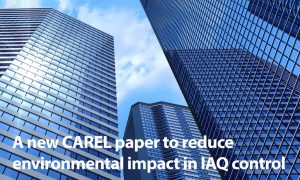India had 21 of the world’s 30 most polluted cities, ranking fifth globally in pollution. Over half of this pollution stemmed from industries, vehicle emissions, crop burning, and domestic cooking. Shockingly, air pollution led to over 2 million deaths in India, with PM 2.5 levels exceeding WHO standards. Here, industry experts are sharing their concerns and inevitable practices we must adopt in the coming days.
In 2019, a global survey sheds light on a concerning reality: India housed 21 of the 30 most polluted cities, propelling the country to fifth in the world’s pollution rankings. Data from iqair.com revealed that more than half of this pollution originated from industries, followed by vehicular emissions, crop burning, and domestic cooking. Shockingly, air pollution was linked to over 2 million fatalities in India, with the notorious PM 2.5 pollutant often exceeding the recommended exposure levels set by the World Health Organisation. Outdoor and household air pollution contributed to severe respiratory issues and a staggering 1.6 million deaths in 2019. The casualties encompassed various health concerns, including strokes, diabetes, lung cancer, and heart attacks. The same year, the State of Global Air 2020 report underscored the grim reality that air pollution had become the leading cause of death, surpassing all other risk factors.
WRI India has introduced the Accelerator for Clean Air Actions (ACAAS), an initiative to provide technical assistance to cities striving to enhance their air quality management strategies, as quoted in the Times of India. The program will be active in ten cities: Surat, Ahmedabad, Vadodara, Indore, Mumbai, Pune, Jalandhar, Agra, Gorakhpur, and Chennai. ACAAS is designed to assist these cities in developing local expertise, data-driven comprehension, and plans for clean air initiatives. Furthermore, the initiative offers a platform for meaningful engagement with key stakeholders, facilitating well-informed policy formulation, project preparation, and effective on-ground implementation.
Combating Air Pollution
Outdoor air pollution reaches its peak in many cities during the months from September to December. It’s crucial to address two key aspects: effective waste management and introducing top-notch air purifiers to the urban environment. Mr. Sarva Daman Singh, the Environmentalist, noted, “In Delhi, the lack of vegetation and greenery was noticed, which plays a role in dust suppression. While we tend to focus on controlling dust at its source, cleaning and maintaining plants and trees are often overlooked as a natural means of air purification. A noteworthy case study comes from Beijing, China, which faced severe air pollution. They successfully improved their air quality within three years through phytoremediation. This involves using plants and trees to mitigate air pollution by utilising their photosynthesis capacity. However, it’s essential to emphasise that effective air purification through vegetation requires consistent cleaning of leaves and green surfaces. Without this upkeep, dust suppression efforts will only be temporary, as movement from people and vehicles can stir up airborne particles again.”
To combat air pollution comprehensively, multiple measures need attention. These include improving building structures to minimise dust infiltration, managing traffic and road conditions, and implementing efficient waste management systems to prevent hazardous emissions resulting from garbage burning. Notably, NASA and WHO have identified dangerous elements like cadmium being released into the air through such burning practices. It’s evident that exposure to these harmful pollutants can compromise even a healthy lifestyle.
The National Clean Air Program (NCAP) has pinpointed and catalogued 132 Indian cities grappling with severe air pollution. Still, this count might appear constrained as it mirrors areas subjected to air quality examinations. With increased testing in more cities, additional areas of critical pollution could come to light. The pervasive scent of plastic waste is a shared encounter throughout India, whether in bustling urban centres or smaller communities, underscoring the widespread pollution problem. In 2023, the Swachh Vayu Sarvekshan (Clean Air Survey) was also executed, shedding light on the air quality status in these critically affected Indian cities. Over the last three years, NCAP has increased the inventory of towns designated as critically polluted. No instances have emerged of cities being delisted from this roster; instead, more towns are annually appended. This trend signals an alarming deterioration in air quality across numerous locations, necessitating indoor air quality monitoring.
IAQ Monitoring
According to Mr Nitin Naik, Managing Partner, Dew Point, anything that can be measured can be monitored. Continuous monitoring is crucial for assessing indoor air quality in buildings. Indoor air is often worse than outdoor air, making monitoring essential. This involves using IoT devices linked to advanced dashboards to identify and predict air quality issues. These dashboards can also control ventilation systems, suitable for larger setups with air handling units and smaller offices. This approach conserves energy while addressing CO2 and TVOC concerns. The past few years have seen a surge in indoor air quality monitoring interest due to increased stakeholder awareness. This awareness extends to both institutions and individuals. For example, regions like Delhi experience higher demand for air purifiers during pollution spikes. As awareness spreads, efforts to combat pollution will likely increase for clean air and water.
Simultaneously, the perspective on air pollution has evolved beyond mere aesthetics. Mr Prashant Jain, Director – of Retail Business, Fluke India, added, “In Delhi’s recent election, air and water pollution, including the restoration of the Yamuna River, became prominent political issues. This shift reflects political intent and a substantial rise in awareness at both institutional and individual levels. Multiple stakeholders contribute to this awakening—magazines, professionals, consultants, and organisations collaborating to provide solutions in this domain. A comprehensive approach is evident from a global, national, institutional, and individual standpoint. Solutions and products are accessible and driven by collective willpower. Though progress might be somewhat gradual, there’s a promising trajectory ahead. Clearly, we are advancing in the right direction, fostering a positive transformation over time.”
Sensor-based systems are prevalent in various installations, but ensuring sensor accuracy is crucial. This is especially important for smaller motors, as about 90% of industrial and building motors are under two HP. Unlike larger motors, many smaller ones don’t use Variable Frequency Drives due to cost considerations. Monitoring the performance of these smaller motors, such as verifying specific RPMs or fan speeds, is vital. Accuracy matters for tasks like conveyors in manufacturing processes. Tachometers, available in contact and non-contact types, provide insights into infrastructure functioning. They are essential for measuring the speeds of motors, chillers, fans, and screw compressors, which often lack VFD or speed counters. Non-contact tachometers allow readings from a safer distance, offering convenience and efficiency.
Air quality monitoring systems have been strategically placed in cities designated as critically polluted. Take Lucknow, for instance, where five such systems are operational. They are situated in different zones: one in the industrial sector, another in public spaces, another in commercial areas, and additional in high-density gathering spots like bus stands and railway stations. These monitoring stations collect data that informs subsequent actions aimed at remediation. As air quality shows improvement, further funding is granted to enhance air quality, including conducting source apportionment studies in collaboration with esteemed institutions like IITs and other academic bodies.
Mr Naik noted that effectively managing elevated CO2 levels is a major challenge in densely populated areas like schools. The issue extends to include TVOCs as well. To address this, the most effective approach involves introducing treated outside air to monitor CO2 and TVOC levels accurately. However, executing this method meticulously using demand control ventilation is crucial. This maintains control over indoor air quality and ensures energy efficiency, a key consideration to avoid excessive energy expenditures. This strategy proves to be the optimal path forward.
Sustainable Cooling Strategies
In any structure, whether it’s a building or an industrial facility, the load on the HVAC system varies throughout the day, depending on factors like the ongoing processes and the time of day. For instance, HVAC might be fully operational in an office from 9 to 5, run at reduced capacity from 5 to 8, and perhaps not needed after 10 PM when occupancy is low. Understanding the timing patterns of these processes is crucial.
Mr. Jain pointed out that implementing extensive air conditioning might not always be practical for institutional buildings and large manufacturing shop floors. Alternatives like evaporative air handling units can serve as viable options. The crux lies in aligning the HVAC system with internal occupancy levels and process needs, requiring consistent monitoring. Should increased occupancy, temperature, humidity, or process-generated heat elevate CO2 levels, a solution involves adapting the air intake. Automatic dampeners that adjust based on demand can achieve this, facilitating the adoption of demand-based air conditioning solutions.
Running HVAC systems at maximum speed or capacity isn’t optimal due to the high energy consumption. In data centres, hotels, hospitals, and malls, nearly half to sixty percent of energy costs originate from air conditioning. Introducing treated outdoor air into the system, while effective for CO2 reduction, comes with substantial expenses. Using HEPA filters for air purification is expensive, as are subsequent dehumidification and cooling processes through a chiller. Demand-based air conditioning proves advantageous in dynamic scenarios, optimising energy utilisation.
Apart from mechanical cooling methods, two fundamental aspects warrant prioritisation. Firstly, the significant natural air conditioning provided by trees should be recognised. Secondly, traditional architecture, notably evident in regions like Rajasthan, significantly contributes to improved indoor air quality and overall occupant comfort. Currently, in areas like Noida and Gurgaon, the proliferation of glass facades leads to a greenhouse effect within buildings. Even with double-insulating glass, the fundamental issue persists. Rather than unthinkingly emulating Western architectural trends, it’s crucial to tap into our indigenous wisdom and architectural heritage. While glass aids insulation in Western climates due to exterior cold, in India, where cooling is more essential than heating, excessive glass produces a greenhouse effect. Reverting to traditional architecture and incorporating natural elements is more suitable. This approach conserves energy and harnesses our historical knowledge and ecological resources, such as trees, for sustainable cooling solutions.
Government Initiatives for Air Quality
The Pollution Control Boards in various states, including the Uttar Pradesh Pollution Control Board, are improving air quality. This effort is particularly targeted at towns identified as critically polluted. Central Pollution Control Board funding supports these towns, contingent on their performance. Mr S.D. Singh remarked that the funds are allocated based on their success in adhering to specified pollution limits, often requiring a 10% to 40% reduction in PM 2.5 and 10 levels.
Significant support comes from the government, financing essential tools such as water sprinklers and smoke guns for public spaces. The drive also includes initiatives like solidifying construction standards and boosting urban greenery through strategic plantations. These projects are underpinned by government funding, further bolstering the efforts to enhance air quality. Misguided efforts to address air pollution can worsen the problem rather than solve it, as inappropriate approaches may contribute to the overall issue.
Conclusively, a proactive approach is encouraged from various quarters. Businesses and individuals alike can interact with the government to contribute to air pollution mitigation, encompassing outdoor and indoor environments. A range of initiatives, such as the Swachh Vayu Abhiyan, is actively pursued, highlighting the diverse strategies and government schemes implemented to combat air pollution.
Mr Prashant Jain, Director – Retail Business, Fluke India
“Natural air conditioning provided by trees and traditional architecture plays a significant role in enhancing indoor air quality and overall occupant comfort.”
Mr. Sarva Daman, The Environmentalist
“Misguided efforts to address air pollution can worsen the problem rather than solve it, as inappropriate approaches may contribute to the overall issue.”
Aman Taluja, Operations Head, Brightflow Engineers Pvt. Ltd.
“The digitalised AHUs assume a crucial role in maintaining indoor air quality, being the primary objective of the ventilation systems.”
Mr. Nitin Naik, Managing Partner, Dew Point
“Anything that can be measured can be monitored.”
Cookie Consent
We use cookies to personalize your experience. By continuing to visit this website you agree to our Terms & Conditions, Privacy Policy and Cookie Policy.














